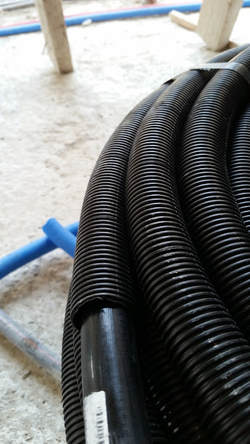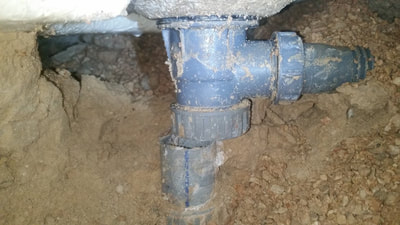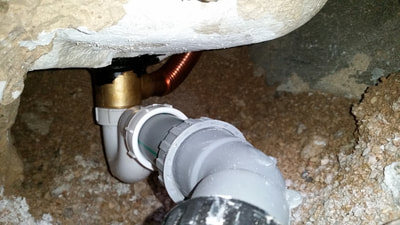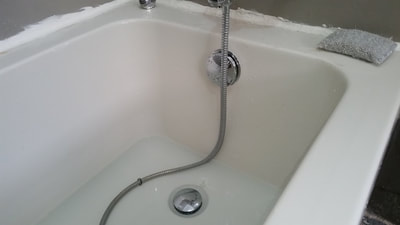|
We were called in to diagnose a serious leak dripping down from our client's ceiling.
They already figured out that the leaking intensified with use of the bathtub. It did not take much time to figure out that the drain was the culprit. Exposing the drain was not easy as the contractor had enclosed everything with concrete. We had to carefully remove the concrete without damaging the acrylic tub. What we found was ridiculous! The pipe was completely dislocated. There was no trap. And the wrong connection was used. We installed a higher quality drain and overflow. We added extra sealant as well. When it comes to tubs and waterproofing we like to double things up. Obviously we added a trap and installed the piping with 45 degree elbows and proper gradient. If you're unsure that your contractor is getting the job done right, we recommend calling in a professional plumber to inspect the system BEFORE closing things up!
4 Comments
 While conducting a plumbing inspection on a construction site in Baka, Jerusalem, we noticed something odd about two rolls of 25 mm pex piping. The diameter of the conduit was too small. The conduit must be two sizes larger than the piping itself, such that a 25 mm pex pipe should be in a 40 mm conduit and a 20 mm pex pipe should be in a 32 mm conduit. The piping in the picture is 25 mm piping in 32 mm conduit. Why is this important? Pex piping is installed in conduit to allow for easy future maintenance. If a pipe or connection springs a leak the floor and walls don't need to be opened for the pipe replacement. If the conduit is sized properly and proper radius is maintained during installation the piping can be easy removed and a new one pulled in place. If the conduit is too small it will be impossible to pull in a new pipe. How did this happen? The manufactures sell either sleeved or non-sleeved piping. Sometimes companies purchase non-sleeved piping, put the piping in their own sleeve, and then sell these rolls to stores. It is in this latter scenario that disastrous mistakes like this occur. |
Details
Archives
July 2020
Categories
All
|




 RSS Feed
RSS Feed
